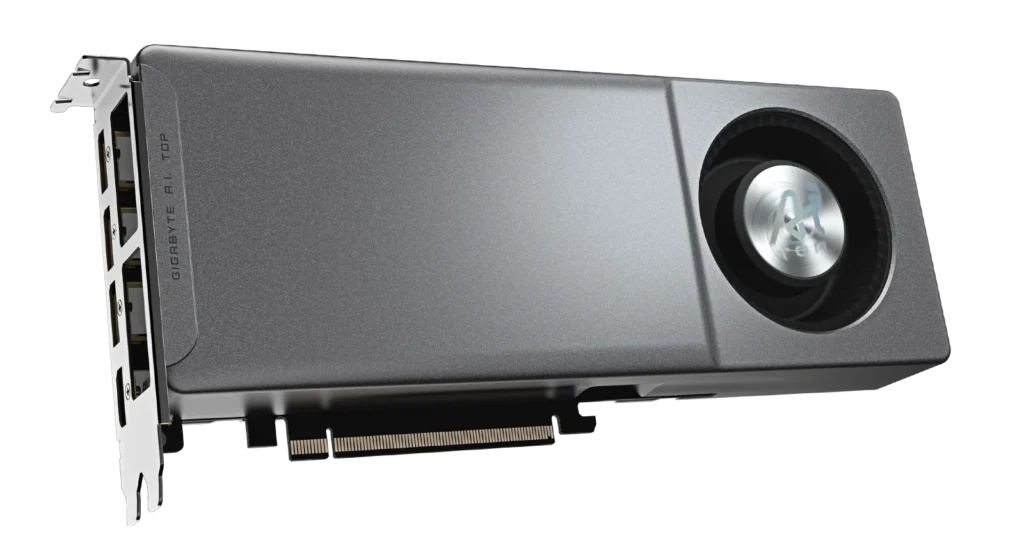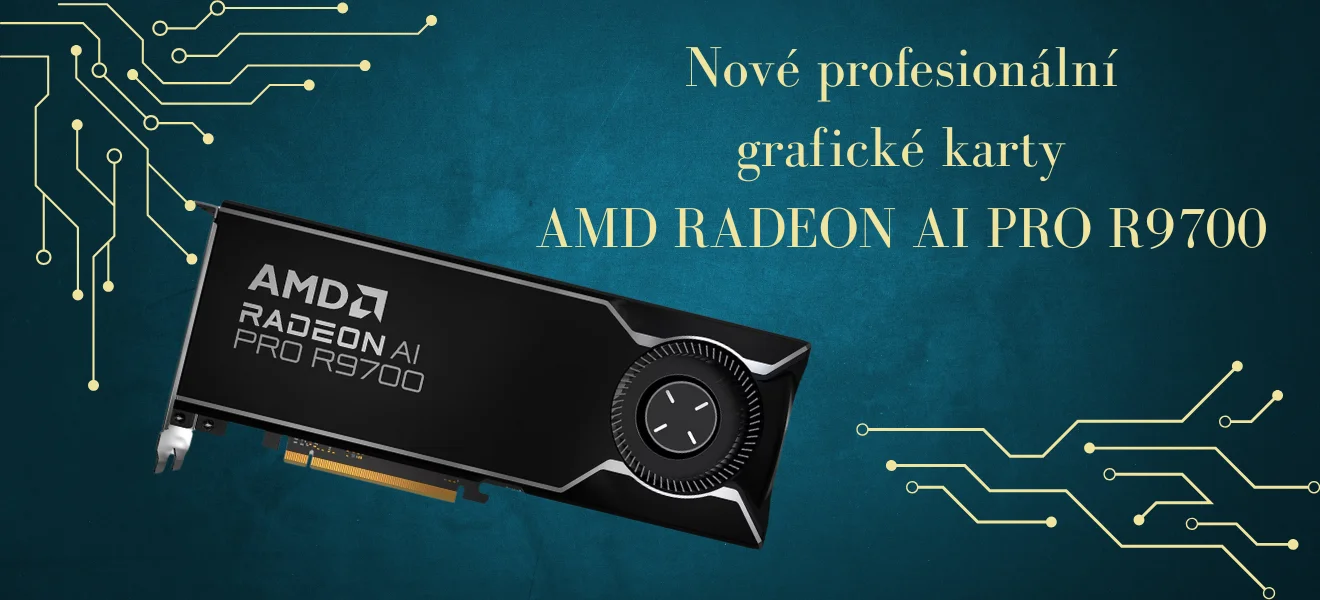AMD is trying again. This time, however, not with a gaming card, but with a new weapon for professionals called the AMD Radeon AI Pro R9700. The card is designed for AI, scientific computing and 3D work. It is said to be something much more powerful than we have seen or expected from AMD so far.
What does the AMD Radeon AI Pro R9700 bring to the table?
The card was unveiled at Computex 2025 and immediately garnered attention. It sounds like a well-oiled machine for complex computing tasks,offering 32GB of GDDR6, a Navi 48 chip with RDNA 4 architecture and a 256-bit memory bus. All of this is aimed at captivating AI developers, simulators, scientists and 3D content creators alike.
The card hit the market in July 2025 and is already offered by several well-known manufacturers. Both reference and overclocked models are available from brands like Asus, Gigabyte, Sapphire and PowerColor. Each with their own cooler and design, but with the same basic foundation.
The AMD Radeon AI Pro R9700 builds on the proven Navi 48 chip
Interestingly, AMD is once again betting on the Navi 48 chip this is the exact same one we find in the RX 9070 XT. This time, however, it uses a more advanced manufacturing process and modified parameters that push the performance many levels higher.
While it’s still RDNA 4, these new graphics cards offer twice the memory and better efficiency. All indications are that the AMD Radeon AI Pro R9700 was originally designed for servers and AI platforms, but eventually headed to professional desktop builds as well.
Manufacturers have already shown their own versions of the Radeon AI Pro R9700
Several brands have already unveiled their own versions of this card. Some are going the compact design route, others have reached for the card’s rugged cooling. However, they all build on the same chip and the same technical parameters. Some manufacturers have focused on computing workstations, others are styling the card as a solution for the creative industry. This just goes to show how wide the potential uses are.
Among the first manufacturers were Asus, ASRock, Gigabyte, Sapphire and PowerColor, and of course AMD itself. Each of them brought their own approach. Asus focused on a compact blower solution, Gigabyte bet on an industrial look and copper components, while PowerColor showed higher clock speeds and stable cooling.

AMD confirmed that other brands like MSI, XFX, Biostar and Acer are already preparing their models and will introduce them in the coming months. The new versions are expected to bring different heatsink designs, higher clock speeds and special editions for professional workstations.
Radeon AI Pro R9700 technical specifications
Before we look at the specs themselves, it’s worth saying that all Radeon AI Pro R9700 models share a common technical foundation, and that’s regardless of whether they’re made by Asus, Sapphire or another manufacturer. They differ only in details such as heatsink design, materials used, frequencies or target deployment.
Someone builds a compact blower solution for racks, another prefers massive air or vapor chamber coolers for workstations. But the basics remain the same.
Common technical specifications for all Radeon AI Pro R9700
- Graphics chip: AMD Navi 48
- Architecture: RDNA 4
- Memory: 32 GB GDDR6
- Memory bus: 256-bit
- Number of stream processors: 4096
- AI Accelerators: 128 units
- Interface: PCI Express 5.0
- TDP: approximately 300 W
- Power: 12V-2×6 connector
- Outputs: DisplayPort 2.1a (exact number depends on manufacturer)
- Support for multi-GPU setups: yes
AMD Radeon AI Pro R9700 targets pros
Unfortunately for gamers, this is not a graphics card made for the gaming world. The AMD Radeon AI Pro R9700 targets professionals who work with neural networks, simulations, 3D visualization, or data processing. If you’re training AI models, rendering, or calculating complex computations, this card from AMD may just become your new workhorse.
At the same time, AMD is entering a space that has been dominated mainly by NVIDIA. The professional card segment has been out of their reach for years, but with this card it may be different. With a price tag of just over 1170 dollars, it gives a clear message that this is a very powerful card for a reasonable amount.
So does the AMD Radeon AI Pro R9700 have a chance to surprise?
Without a revolutionary chip, but with an upgraded base, large memory and AI accelerators, the AMD Radeon AI Pro R9700 looks like a serious challenge to the competition. It’s not a cry in the dark but we see it as a carefully thought out step into a segment where reliability, stability and power under load is paramount.
If AMD can manage to deliver a good software ecosystem and support to the Radeon AI Pro R9700 as well, this card could become a favorite tool of professionals. At the very least, those looking for an alternative to expensive NVIDIA cards should pay close attention and follow the manufacturers’ official statements.
